Cultivating Commitment: Strategies for Achieving Organizational Buy-in
A great idea without staff or volunteer support is like dough without yeast. Even with your hard work it will not rise to a significant level of success. Underneath all the blue sky and hope filled planning is the landscape where the change must be built: your team. Getting those you lead to buy into the plan is crucial if the change stands any chance of taking hold.
The fact is people are usually down on what they are not up on! Maybe that’s why Benjamin Franklin said, “Tell me and I forget. Teach me and I remember. Involve me and I learn.” Buy-in is the result of involvement.
Simply put buy-in is the willingness of a group to support the accomplishment of an action or decision. Developing buy-in creates the opportunity for broader involvement in the design and implementation of a plan for change. The basic elements for creating buy-in are pretty straightforward. Creating buys in requires:
- Gaining the attention of the audience so they can hear your message
- Developing the interest of the audience so they can understand your message
- Creating a desire in the audience so they want your message accomplished
- Encouraging your audience to personally take action and carry out your message
There are always barriers on the path to buy-in. One thing I have observed is that people willingly flow with new ideas until the proposed change actually costs them something. When people feel the pain of change the temptation to resist begins. It is at this point that buy-in can make all the difference. Barriers to buy-in include:
- Unrealistic time constraints. The involvement that creates buy-in takes time.
- Impatient leadership. This attitude shuts down the involvement of your best leaders. They perceive your impatience as a lack of understanding of their reality and unconcern for them personally.
- Personal defensiveness on the part of the leader. People need to process change. That means they can’t go forward without talking about it and challenging it. Defensive leaders can’t constructively handle the perspective of others.
- Thinking that organizational compliance is buy-in. If you are the boss, the senior pastor or in some other position of organizational authority you might be able to demand compliance. When you play the boss card people tend to do just enough to get by. Commitment and creativity is volunteered not demanded.
The path to creating buy-in is the path of interaction, inclusion and involvement. If you are serious about creating buy-in here are few helpful steps.
- Talk with people about the vision before the change initiative is designed. Deliver the message the way they need to hear it. Take into account their communication style and schedule. Be sure to help them see what is in it not just for new members and the organization overall but what is in it for them as well.
- Ask them to be involved in the process by giving them personalized tasks that match their job responsibility and that tap into their ability to contribute to the vision.
- Listen to their ideas. Allow new inputs to shape the change. When they add value in ways that you had not anticipated be prepared to change the changes you had planned.
- Clearly understand the facts of the change. When creating buy-in it is critical to have the facts straight. Do your homework. People want to start their conversations about change from the past or the problem that is prompting the change.
- Ask specifically for support. When you have talked about the change. When all reasonable questions have been discussed and answered. When you have listened to and responded to suggestions it is time to ask, “Can I count on your support for ______________?”
Never under estimate the power of creating organizational buy-in. It really does determine who is with you. Start the process as early as possible with those you know often disagree with you. This can be a great way to communicate their value and foster respect and trust.
Your Turn: What do you do to foster organizational trust?




